
This Jedson Jet, model 4444 is a rather nice guitar built by Matsumoku for Dallas Arbiter / Dallas in the early 1970s. The Jedson Jet was, of course, a copy of the Gibson Les Paul Custom, with its jet black finish (from which this model took its name), and contrasting gold hardware.
The Jedson Jet launched in late 1971, and although dating Matsumoku guitars accurately is not easy, this guitar is most likely from 1972.
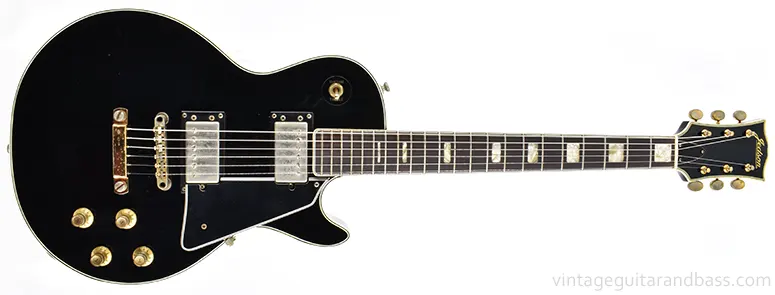
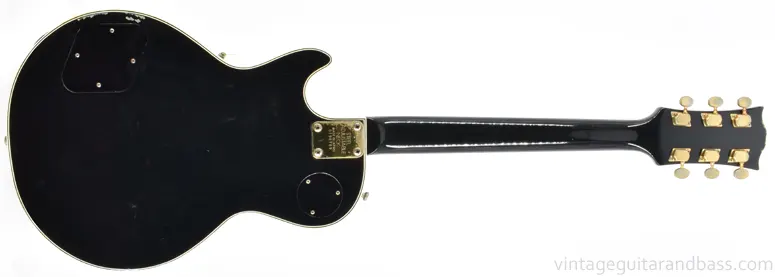
The 1971/72 Dallas Arbiter catalogue describes the Jedson Jet as follows:
Incorporates two high sensitivity, gold plated pickups, each with separate volume and tone controls plus toggle pick up selection switch for further tonal variation. Fast, low action neck with fine tuning gold plated machine heads. Micro tune gold plated bridge provides height adjustment and individual bridge saddle. Jet black gloss finish plus white purfling edges, lead and the outfit includes carrying case.
At this time, the Jet guitar outfit had a list price if £66.33 (outfit includes guitar, lead, case, hex key). Of course, Matsumoku were producing guitars for numerous distributors worldwide and (effectively) the same guitar was marketed by Aria as model 5522, Univox as the 'Rhythm and Blues', Rose-Morris as the Shaftesbury 3400 - with no doubt other examples too.
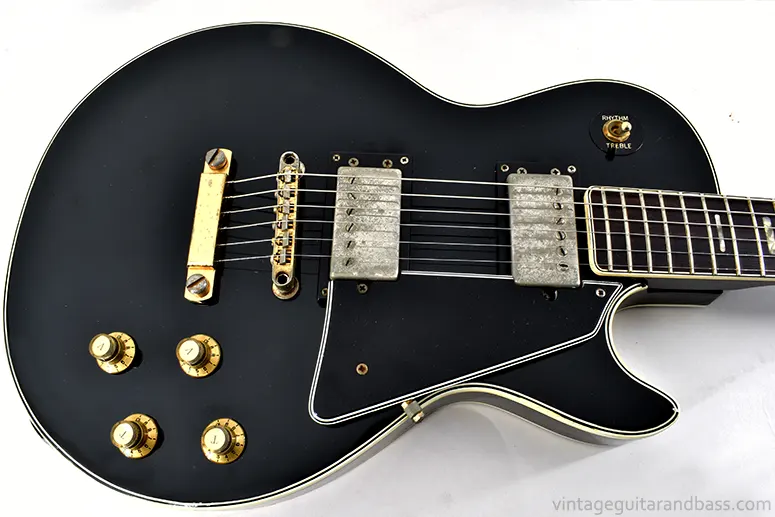
The Jedson Jet had gold-plated hardware throughout, but this was not especially durable. This example has fairly strong plating left on the bridge and tailpiece, but the pickups are heavily worn - as is just about always the case! The guitar is fitted with the same metal-capped control knobs fitted to the majority of Matsumoku guitars of this period.

This guitar is fitted with two Maxon humbuckers. The neck pickup has a DC resistance 11.9kΩ, the bridge 12.0kΩ. Although no gold-plating is visible here, there is still some on the edges (concealed by the plastic pickup surrounds) and underside of the cover.
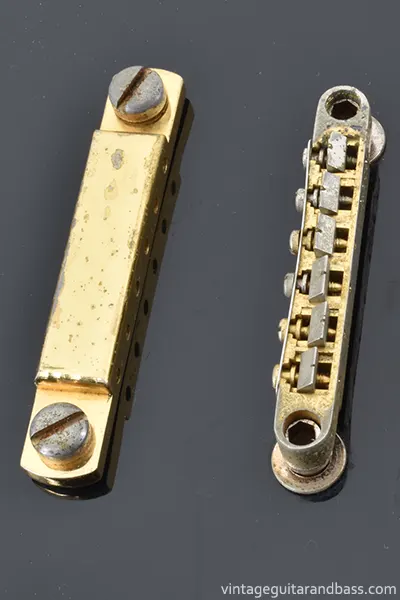
The bolt-through stop tailpiece and HTF bridge. Bridge height adjustments are made with a 5mm hex key.
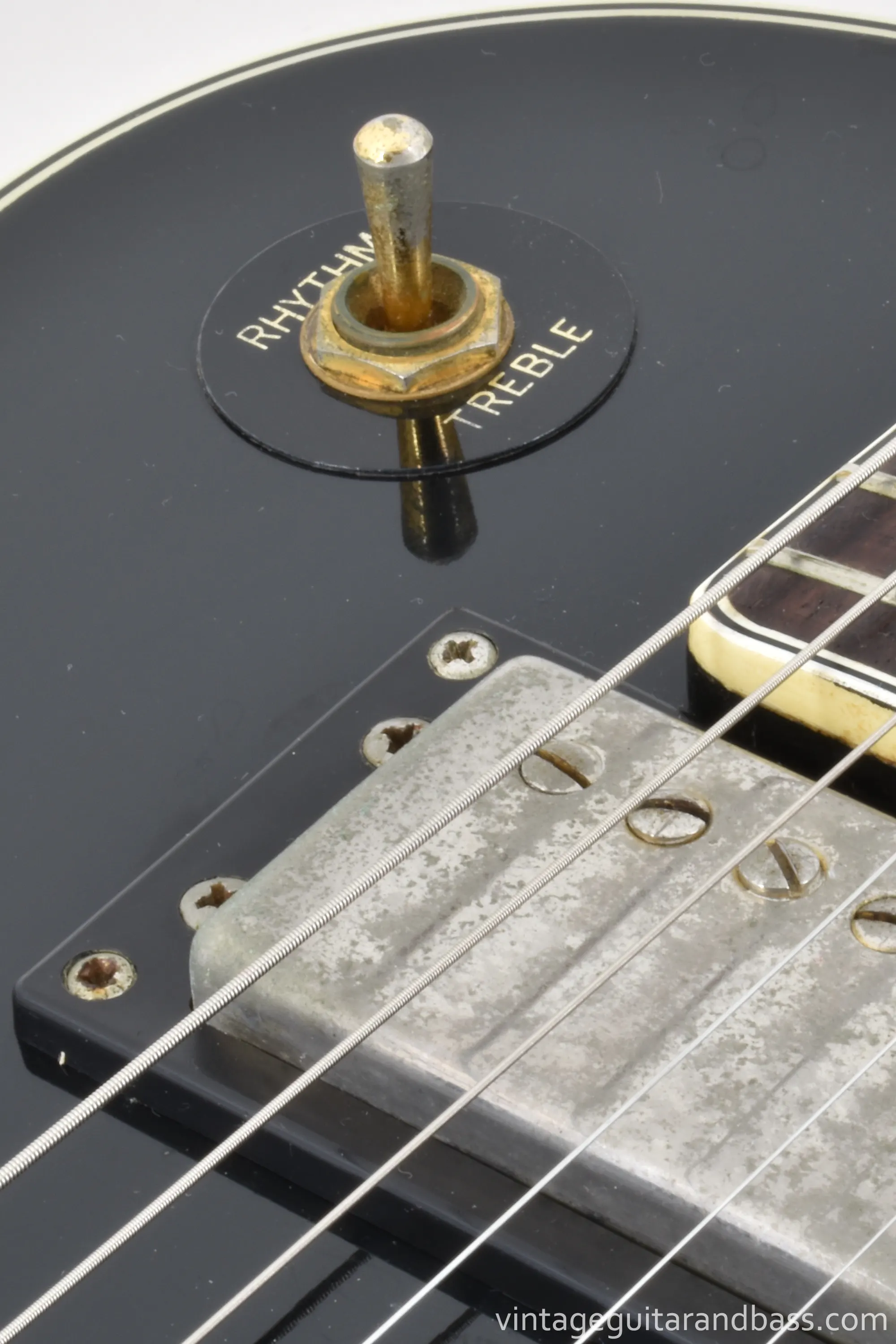
The three-way pickup selector switch: up - neck pickup; middle - both pickups; down - bridge pickup. Note the switch itself is gold plated and has no plastic tip.

The neck plates of these guitars are also somewhat prone to wear, however this one has plenty of gold left. The wording "STEEL ADJUSTABLE NECK / MADE IN JAPAN" and then a seven digit serial number is a good indication of a Matsumoku-made guitar of this period. Unfortunately there is no known way to date these guitars using the serial numbers, however they seem to have been issued (to some extent) sequentially.

Jedson 4444 headstock front. Although the same size, shape, and with the same truss rod cover as most other early seventies Matsumoku 'Les Pauls', the headstock branding varied somewhat - in this case a silk-screen Jedson logo.

Jedson 4444 headstock reverse. Many early 'Les Paul' guitars from Matsumoku (and seemingly other makers) used the same gold-plated closed gear tuners with elliptical buttons.

Jedson Jet 4444 in its original yellow-lined case.
Extra content on this guitar is included in the Supporting Members area here
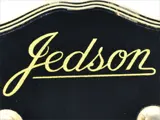


£287
£302
£375
£32
£195
£313
AU $795